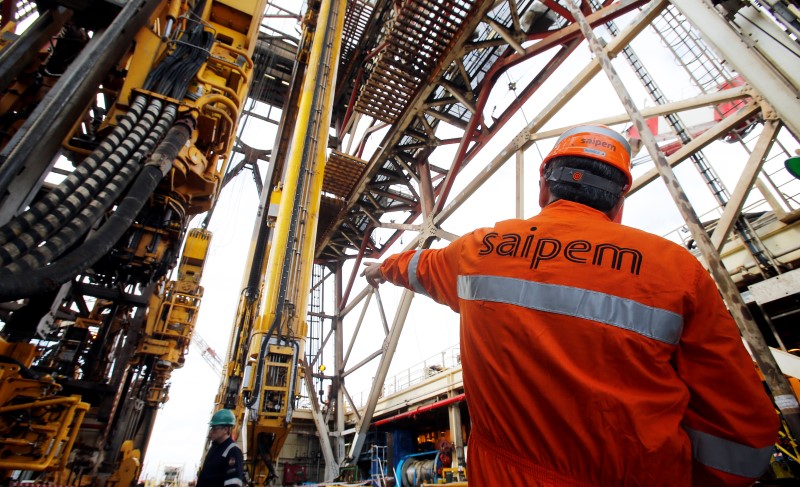Fed’s Powell opens door to potential rate cuts at Jackson Hole
Investing.com -- Saipem (BIT:SPMI) has been downgraded to a "hold" rating by analysts at Stifel in a note dated Monday, citing concerns over cost overruns and potential execution risks tied to two major projects.
While the company is set to report strong fourth-quarter and full-year 2024 results on February 26, analysts believe investor focus will shift to ongoing challenges in the Courselle offshore wind project and the Thai Oil refinery development.
Saipem’s fourth-quarter revenue is expected to rise by approximately 11% year-over-year, with a significant 44% increase in EBITDA.
The company’s backlog is forecasted to reach around €34 billion, equivalent to 2.4 times its estimated 2024 revenue.
Analysts remain positive about the broader outlook for the offshore business, which has been a key driver of growth.
However, persistent issues in certain projects, particularly Courselle and Thai Oil, have raised concerns heading into 2025.
A recent pre-close call with management revealed that the Courselle project has completed its first drill, but 63 more remain outstanding, with an update expected in February.
Meanwhile, the budget for completing the Thai Oil refinery has been revised upwards by $1.7 billion. These cost increases have raised doubts about whether Saipem’s current provisions of €370 million will be sufficient to cover potential overruns.
On the other hand, the Mozambique LNG project is on track to restart in 2025, with financing negotiations underway. Unlike the troubled Courselle and Thai Oil projects, Mozambique’s contract structure allows for cost reimbursements plus a margin, reducing financial risk for Saipem.
Looking ahead to 2025, Stifel analysts expect Saipem’s revenue to range between €14.2 billion and €14.4 billion, driven by its strong backlog. EBITDA is projected to be between €1.5 billion and €1.6 billion.
While these figures align with earlier estimates, analysts warn that cost overruns on key projects could weigh on financial performance.
The company’s offshore wind and onshore engineering and construction divisions continue to face operational challenges, making investors wary of execution risks.
Stifel’s downgrade reflects these uncertainties, despite Saipem’s overall strong positioning in the oilfield services sector.
The stock had previously benefited from optimism surrounding new contract wins and backlog growth, but analysts believe the market may now take a more cautious stance.
Valuation concerns also played a role in the downgrade. Saipem trades at a discount of approximately 35-40% compared to peers on EV/EBIT and EV/EBITDA multiples.
Historically, this discount has averaged around 30%, suggesting that investors remain wary of potential risks. Stifel’s price target remains unchanged, but with limited upside potential and the possibility of higher costs in 2025, the brokerage sees little reason to maintain a "buy" rating.
The broader industry outlook presents additional risks. A slowdown in the global economy, weaker oil and gas prices, or geopolitical instability in key markets could further impact Saipem’s prospects.
Supply chain disruptions and increased competition in offshore drilling are also factors that could pressure margins.
Despite these concerns, analysts acknowledge Saipem’s progress in shifting its focus towards higher-margin offshore activities.
The company has secured a strong backlog, with about 70% tied to offshore drilling and offshore engineering and construction—segments that have historically delivered solid earnings.
Operational improvements and cost-cutting initiatives have helped stabilize profitability in its onshore engineering and construction division.
While Saipem’s turnaround appears to be gaining traction, Stifel analysts believe the full benefits will only become more evident in 2025 and beyond.
Until there is greater clarity on the financial impact of ongoing projects, the brokerage maintains a "hold" rating on the stock, advising investors to monitor execution risks closely in the coming quarters.
